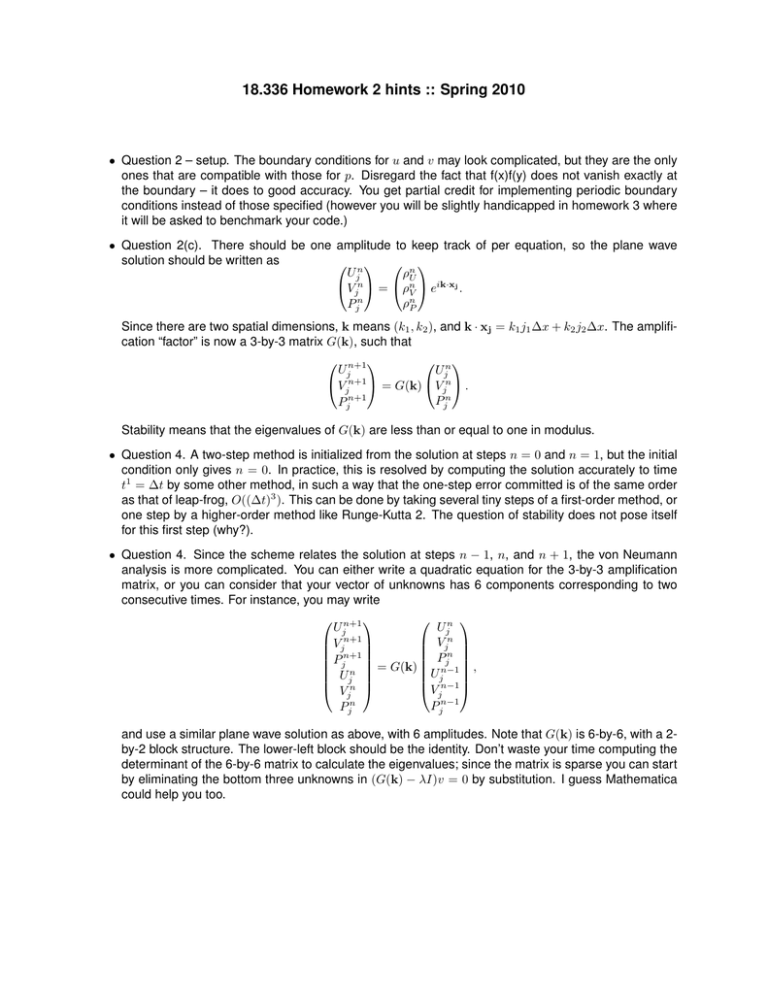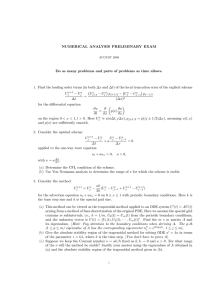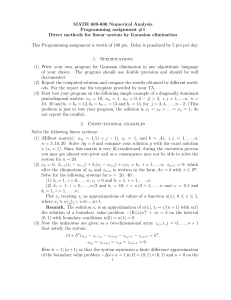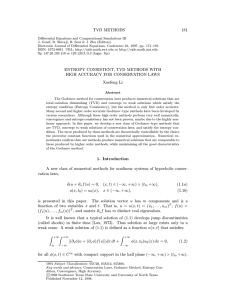18.336 Homework 2 hints :: Spring 2010
advertisement

18.336 Homework 2 hints :: Spring 2010 • Question 2 – setup. The boundary conditions for u and v may look complicated, but they are the only ones that are compatible with those for p. Disregard the fact that f(x)f(y) does not vanish exactly at the boundary – it does to good accuracy. You get partial credit for implementing periodic boundary conditions instead of those specified (however you will be slightly handicapped in homework 3 where it will be asked to benchmark your code.) • Question 2(c). There should be one amplitude to keep track of per equation, so the plane wave solution should be written as n n Uj ρU Vjn = ρnV eik·xj . ρnP Pjn Since there are two spatial dimensions, k means (k1 , k2 ), and k · xj = k1 j1 ∆x + k2 j2 ∆x. The amplification “factor” is now a 3-by-3 matrix G(k), such that n Ujn+1 Uj Vjn+1 = G(k) Vjn . Pjn Pjn+1 Stability means that the eigenvalues of G(k) are less than or equal to one in modulus. • Question 4. A two-step method is initialized from the solution at steps n = 0 and n = 1, but the initial condition only gives n = 0. In practice, this is resolved by computing the solution accurately to time t1 = ∆t by some other method, in such a way that the one-step error committed is of the same order as that of leap-frog, O((∆t)3 ). This can be done by taking several tiny steps of a first-order method, or one step by a higher-order method like Runge-Kutta 2. The question of stability does not pose itself for this first step (why?). • Question 4. Since the scheme relates the solution at steps n − 1, n, and n + 1, the von Neumann analysis is more complicated. You can either write a quadratic equation for the 3-by-3 amplification matrix, or you can consider that your vector of unknowns has 6 components corresponding to two consecutive times. For instance, you may write n Uj Ujn+1 Vjn+1 Vjn n+1 n P j j = G(k) Pn−1 Un Uj , j n−1 Vn V j j n−1 n Pj Pj and use a similar plane wave solution as above, with 6 amplitudes. Note that G(k) is 6-by-6, with a 2by-2 block structure. The lower-left block should be the identity. Don’t waste your time computing the determinant of the 6-by-6 matrix to calculate the eigenvalues; since the matrix is sparse you can start by eliminating the bottom three unknowns in (G(k) − λI)v = 0 by substitution. I guess Mathematica could help you too.











